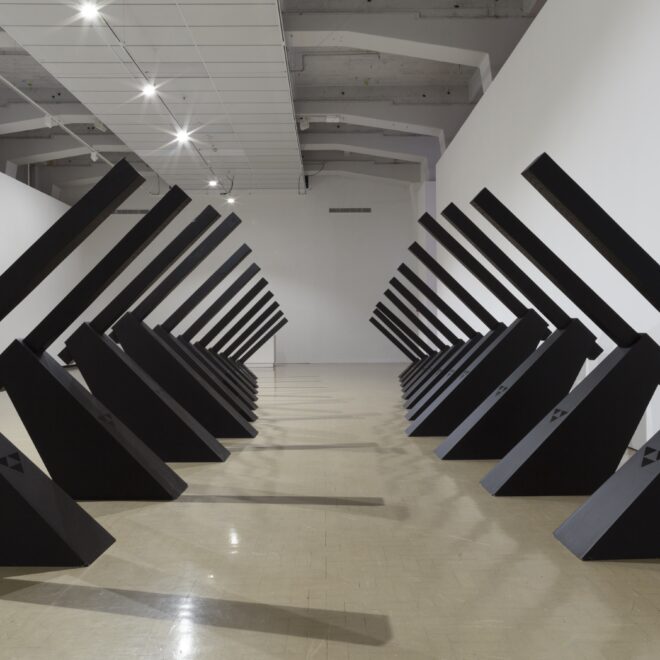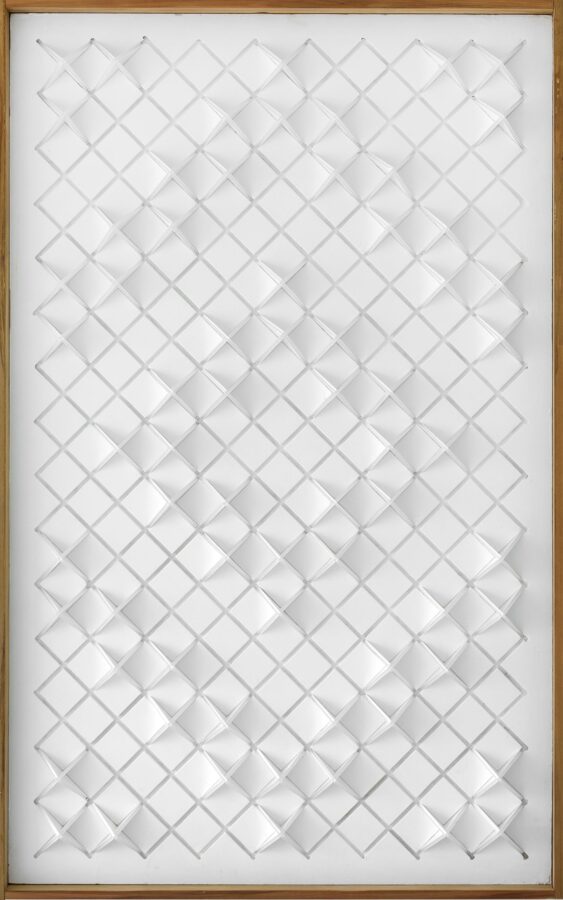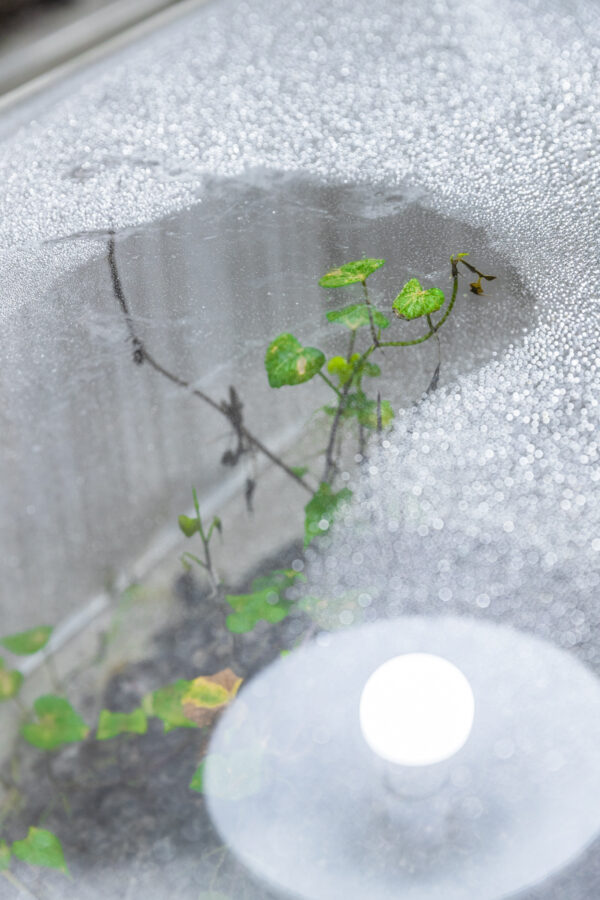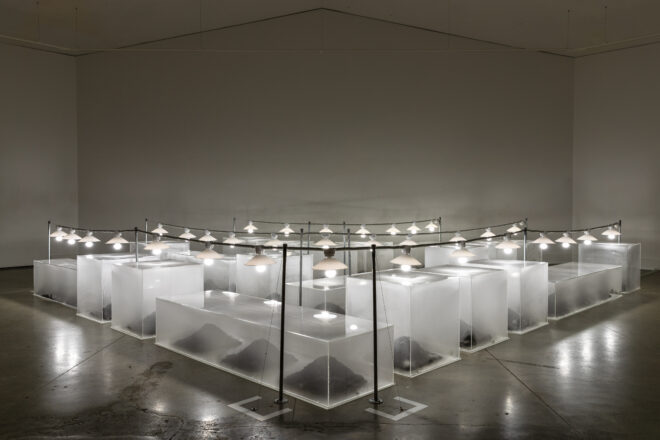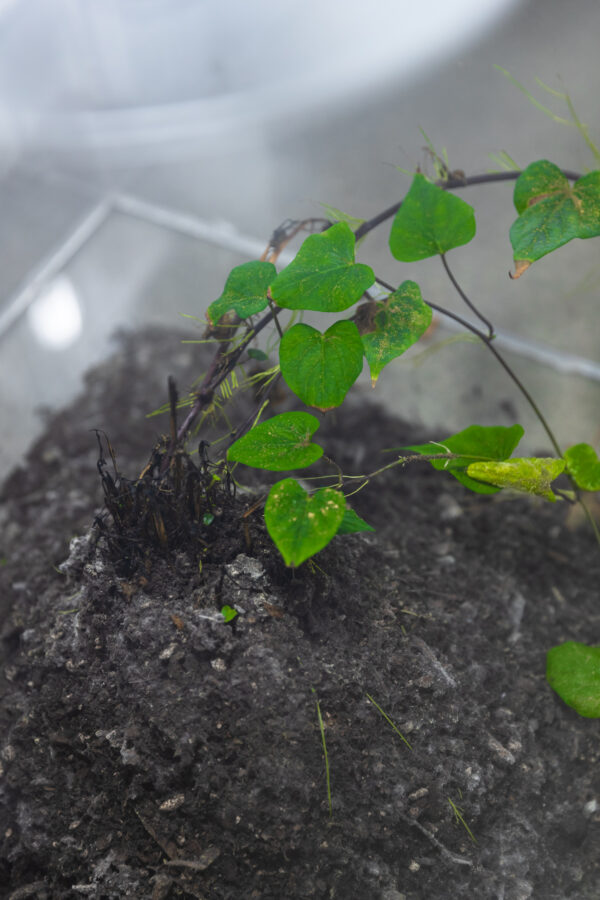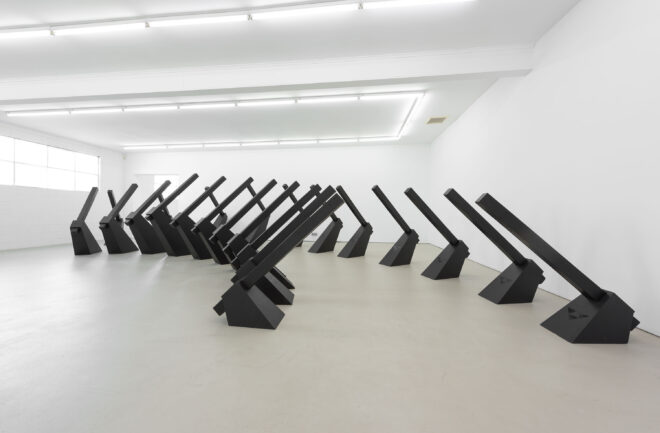Hōhua Thompson (Te Aitanga-a-Hauiti, Ngāti Kahu, Ngāti Awa, Ngāti Rangiwewehi) graduated with an MFA from Whitecliffe School of Fine Arts in 2021, and has realised projects with City Gallery Wellington, The Dowse Art Museum, Enjoy Contemporary Art Space, Blue Oyster Art Project Space, Aotearoa Art Fair, Toi Māori Gallery and Tairawhiti Museum.
Working at scale, Thompson’s work reflects on intergenerational knowledge transmission, storytelling and kaitiakitanga. His practice combines traditional Māori art forms such as whakairo and tukutuku with modern materials and processes to communicate stories from his own whakapapa, and to examine how these stories may apply to wider Māori communities.
He has stated, Storytelling is an integral part of my artistic practice. It has become a way for me to interrogate the position we, as Māori, occupy in contemporary New Zealand society … The way I have had it explained to me, in Te Ao Māori we have two kinds of stories, purakau and pakiwaitara. The simplest way to describe the distinction between the two is that purakau are stories about gods: think the separation of Rangi and Papa, Tane’s ascension through the heavens; while pakiwaitara deal with the exploits of our tupuna: think the migration stories and all of the stories since then.
What both kinds of stories have in common is that they connect us through space and time to our ancestors, demonstrable in the substantial work Te Haehaenga O Pekehāua, exhibited in Memory Lines (2024) curated by Dr Kirsty Baker for City Gallery Wellington. Occupying and imposing on physical space with an evocative presence, a mōteatea chant is heard above, a means to reinforce Ngāti Rangiwewehi knowledge within the space. This mōteatea is a recording of Hōhua, his mother and father and cousin Casey, referencing the way in which mōteatea were often played on a marae as a way of handling down long stories associated with tribal boundaries and ancestral whakapapa.
A second major conceptual work is Te Kete Rokiroki, previously seen in different iterations at The Dowse Art Museum and The Blue Oyster Art Project Space, and exhibited at Trish Clark Gallery in 2024. As Thompson explains, Te Arawa traditions speak of the kūmara being brought to Aotearoa by Whakaotirangi where it became increasingly important to Māori. Kūmara are associated with the atua Rongomātāne, who is not only the atua of cultivated plants, but also of peace. Grown from tupu or ‘slips’ which are sprouts grown from kūmara from the previous harvest, and collectively tending them, is to take care of and share the stories and mana of not only my koro, but of all our tupuna. Te Kete Rokiroki becomes a venue for sharing and discussion through the collaborative maintenance of the māra kūmara (kumara garden), which provides us with fertile ground and stable footing with which to grow our own narratives to take forward.





